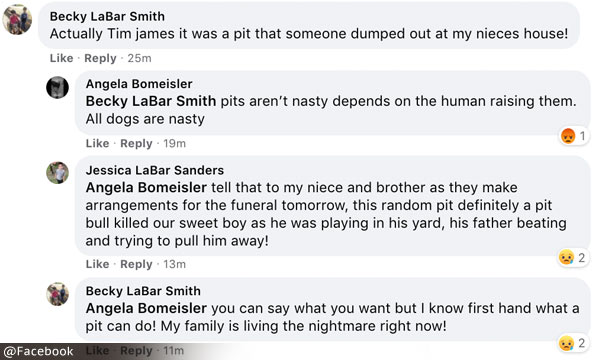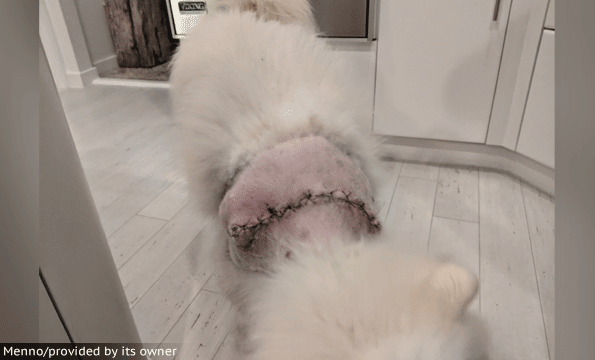
The top three regulated dog breeds: pit bulls, rottweilers and wolf-dog hybrids.
BSL Estimate 2020-2021
DogsBite.org - Since 2011, we have maintained an estimate of breed-specific laws across the United States, including breed-specific policies governing military housing. A decade ago, all three major military divisions -- U.S. Army, U.S. Marine Corps and U.S. Air Force -- banned a group of dangerous dog breeds, chiefly pit bulls, rottweilers and wolf-dog hybrids, due to the "unreasonable risk to the health and safety of personnel in family housing areas" these dog breeds pose.
Currently, our modest estimate shows that 1,200 cities, towns and villages regulate specific dog breeds for public safety purposes and 42 counties have enacted countywide breed safety laws too. Jurisdictions in 40 different states have enacted breed-specific ordinances. Our estimate also tracks international breed-specific laws. Currently there are jurisdictions in at least 54 countries with breed-specific laws. In 43 of those countries, the regulation is a national-level law.
Including: Argentina, Austria, France, Ireland, New Zealand, Norway, Poland, Russia, South Korea, Spain, the United Kingdom and more.
Many U.S. municipalities with breed-specific laws are concentrated in the Midwest. Other states, primarily preemption states, have virtually no breed-specific laws. In the early 1980s, cities began enacting breed-specific laws in response to grisly pit bull maulings. By 1992, dogfighting and dog breeder interests had pushed through preemption laws in ten states, including three of the most populous, California, Florida and Texas, prohibiting local jurisdictions from adopting pit bull laws.
There have been many horrific fatal maulings carried out by pit bulls and rottweilers in these three states ever since (See: Deaths After State Preemption). The most recent state to pass legislation in this area is Washington, which enacted a mandatory exemption law. The law requires cities with existing or new breed-specific laws to provide an exemption for the owners of regulated breeds if their dog passes the American Kennel Club's Canine Good Citizen (CGC) test or its equivalent.
2020 Legislative News
2020 got underway with a lightening speed attempt to repeal the longstanding pit bull ban in Denver. That attempt was halted when Mayor Michael Hancock vetoed the legislation on Valentines Day. Meanwhile, the adjacent city of Aurora discussed repealing their pit bull ban as well. On election day, November 5, the citizens of Denver repealed the pit bull ban and replaced it with a provisional breed-restricted license that did not even mandate the sterilization of pit bulls.
On January 11, 2021, Aurora city council members repealed their pit bull ban and did not replace the repeal with any breed-specific measure.1
During 2020, we analyzed three years of bite statistics and injury severity data from Denver in anticipation of this repeal. We also analyzed three years of bite statistics, intake and euthanasia data from Aurora. Despite pit bulls having a lower population in both cities due to their enduring bans, pit bulls were still among the top-biting breeds. We estimate that bites and attacks inflicted by pit bulls in both cites will increase by a four-fold within five years of lifting their pit bull bans.
State Preemption Bills
In 2020, three states faced preemption bills that would bar local governments from enacting breed-specific laws, down from six states in 2018, nine states in 2016 and seven states in 2015. The bills in all three states -- Kentucky, Michigan and Missouri -- failed. These same three states face another round of preemption bills in 2021. Every year, a new round of preemption bills are brought in these states by Utah-based fighting dog advocates, Best Friends Animal Society.
In 2021, preemption bills in other states have been introduced by other sources as well, including Iowa and Mississippi. The House (HF 59) and Senate (SF 143) bills in Iowa are sponsored by the owners of pit bull-mixes or mixed-breeds. Both bills are also being driven by the Humane Society of the United States and their lobbying arm, HSLF, which uses a front group, "Stray Dog Policy," because the HSUS has a factory farming agenda that Midwest farming states typically reject.
"The Humane Society of the United States is lobbying for these bills. The same organization that took no action and made no statement after a pit bull belonging to Connecticut State HSUS director, Annie Hornish, killed an elderly woman visiting her home in 2019. Hornish misled authorities about how the woman died, claiming that she “fell” instead of suffering a Level 6 bite, which resulted in her death. For over a year, Hornish has fought all efforts to humanely euthanize the dog. Today, she remains in her position with the HSUS. Another group lobbying to pass both bills is “Stray Dog Policy,” which is funded by the lobbying arm of the HSUS, the Humane Society Legislative Fund (HSLF). Stray Dog Policy is located at the same address as the HSLF Kansas office (HSLFKS.org). The entities are one in the same." - DogsBite.org, January 28, 2021
"One of the top officials of the Humane Society of the United States owns a killer pit bull -- is this really a surprise? The modern HSUS can be counted on no longer to promote a healthy relationship between people and dogs, as evidenced by the fact that it has staunchly refused to take a stand against the breeding of pit bulls. It refuses to recognize that this is the most abused, unwanted and dangerous type of dog, known for its savage, fatal attacks on its owners and its owners' children. This type of dog also commits 90% of the fatal attacks on other people's dogs, cats and horses. The HSUS, which normally would be expected to support the best interests of animal shelters, knows that pit bulls make up more than half the dogs in shelters, putting a huge financial strain on shelters and forcing them to push pit bulls on unsuspecting, good people who often are tricked into accepting this unsuitable, risky animal into their homes. If the HSUS cared about pets and people, it would speak out against the breeding of pit bulls. But instead, a high-level official of that organization turns out to be the owner of one of the 30 or 40 pit bulls which have killed an American this year. What a terrible reflection on a once noble organization." - Attorney Kenneth Phillips, DogBiteLaw.com, December 13, 2019
Rental & Housing Properties
A substantial source of breed-specific policies, which our estimate does not track, are the million-plus rental properties governed by breed-specific leases in all 50 states.2 Rental property and insurance companies assess risk. Insurance carriers may refuse coverage for apartments, condominiums and homes if a lease fails to prohibit dog breeds on their blacklist. Private rental properties, HOAs and insurance agencies are unaffected by municipal breed preemption laws.
When you combine the many types of breed-specific laws -- municipal ordinances, military policies, Indian reservation and public housing policies, insurance blacklists and the tens of millions of Americans living in private rental properties governed by breed-specific leases -- one gains a clearer picture of these breed safety laws. They are designed to prevent serious attacks by high-risk dog breeds that are well-documented in medical journals for inflicting severe injuries.
Our estimated summary of breed-specific laws is just one source of this prevention. When or if another state passes a preemption law peddled by an out-of-state special interest group, a source of this protection will be removed from that state, but other sources will remain, such as rental leases. Finally, the significance of breed-specific laws worldwide shows that the genetics of a dog breed remain the same, whether the dog lives in the U.S., France, South Korea or New Zealand.
Revised Website Section
In January, we released a revised section of the website, Breed Safety Laws, which emphasizes Model and Noted breed-specific ordinances. It also emphasizes Mandatory Spaying and Neutering ordinances, primarily aimed at pit bulls and other fighting breeds, from nine states. The latter being the most basic safety step a community can take when pit bulls are disproportionally biting, disproportionally occupying shelter space and disproportionately being euthanized.
Our collection of over 900 breed-specific ordinances by state now requires a login. Further, we do not anticipate updating this estimated breed-specific laws 2021 report until at least 2025 or beyond. Our mission is to track severe and fatal injuries disproportionately inflicted by a small group of dangerous dog breeds. Not to provide a "housing tool" for the owners of pit bulls or those seeking to place pit bulls, which is how our State-by-State section was primarily being used.

Estimated U.S. cities, counties, states and military housing with breed-specific laws 2021.
2We could find no estimate for the vast number of rental properties governed by breed-specific leases, but breed restrictions are common. According to the National Multifamily Housing Council, over 43 million households are renter-occupied and comprise over 100 million residents (34% of the U.S. population), all of which are subject to a lease agreement. Nearly one-third of these residents, 27 million, rent a unit within a multi-unit rental property.
Related articles:
01/02/20: Estimated U.S. Jurisdictions with Breed-Specific Laws (2019-2020)
01/01/20: Fatal Pit Bull Attacks - The Archival Record - DogsBite.org
01/01/20: Fatal Rottweiler Attacks - The Archival Record - DogsBite.org
04/23/18: Fatal Wolf-Dog Hybrid Attacks - The Archival Record - DogsBite.org
04/20/15: A Primer on State Preemption Laws and Charts for Advocates by DogsBite.org








